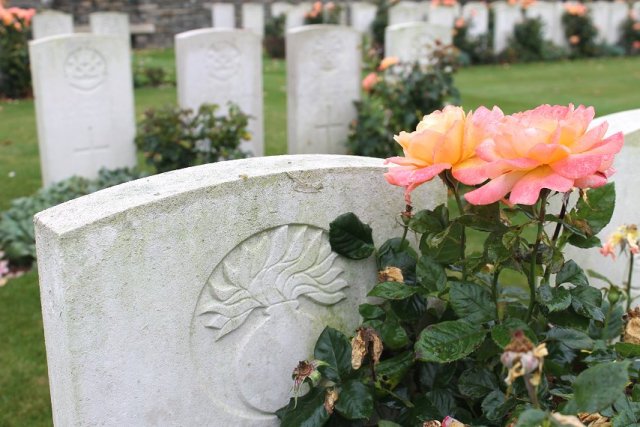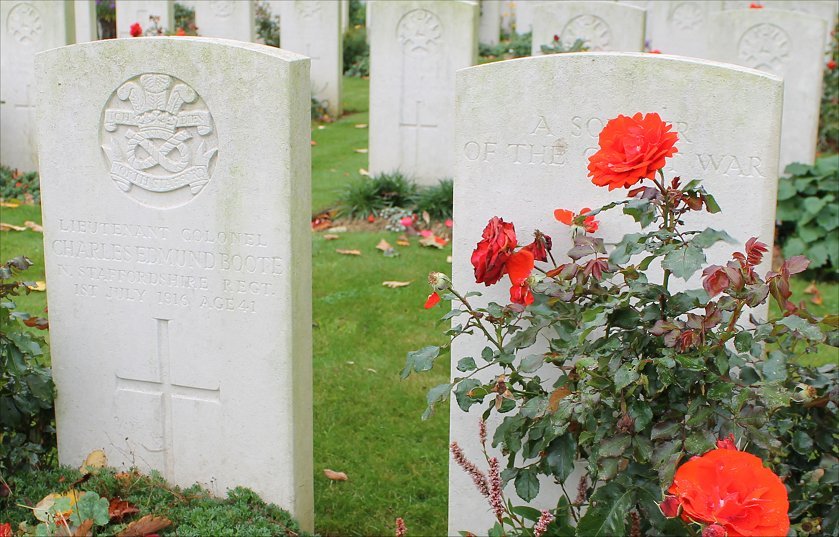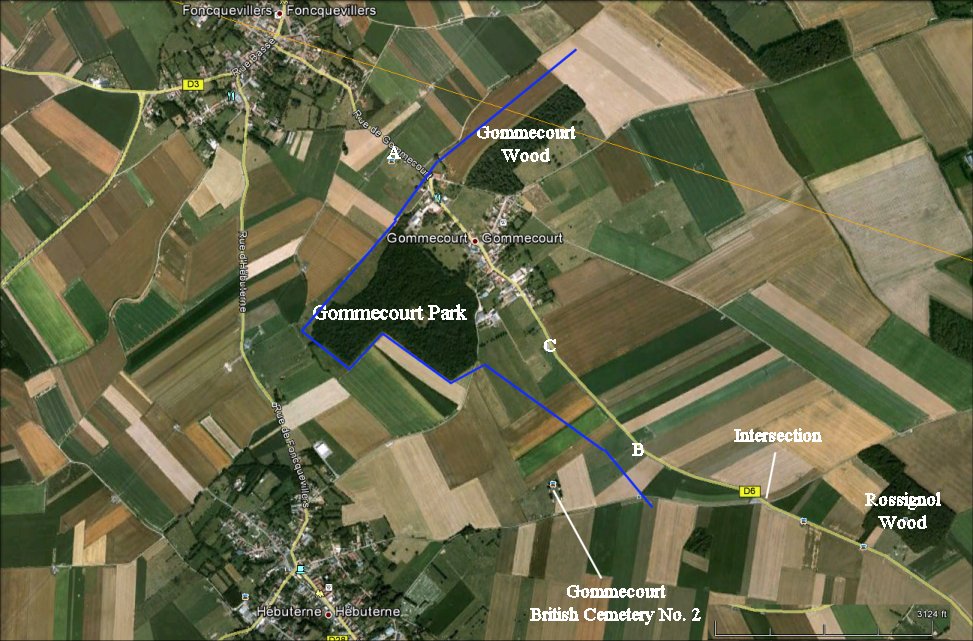At 6:25 along the 46th Division front, the Germans saw the British
bombardment building to a climax, so they conducted their own
bombardment of the British artillery. A smokescreen designed to
hide the
attack actually confused the attackers along with old trenchs in no
man's land. The German barbed wire had been repaired the
previous
night. German artillery caused many casualties among the
attacking
British, and even the third and fourth waves suffered heavily.
The first wave reached the German front line but barely held on.
The corps commander ordered another attack a little after noon,
but the division commander saw the futility and canceled the attack.
In the 360 degree view above, the British were attacking from trenches
on this side of Foncquevillers, which they called "Funky Villas" in the
direction of Gommecourt. Gommecourt Wood New Cemetery is in no
man's land. The German
front line was about 200 yards to the left of Gommecourt Wood.
1/6th South Staffordshire on the southern flank of the 46th
Division attacked near here toward Gommecourt Wood, losing half its
men. 1/7th Sherwood Foresters suffered 409 lost out of an
original 536 men.
The 46th Division was decisively repulsed, losing 2,455 men. This
allowed the German artillery to concentrate on the 56th Division to the south.

|
 |





